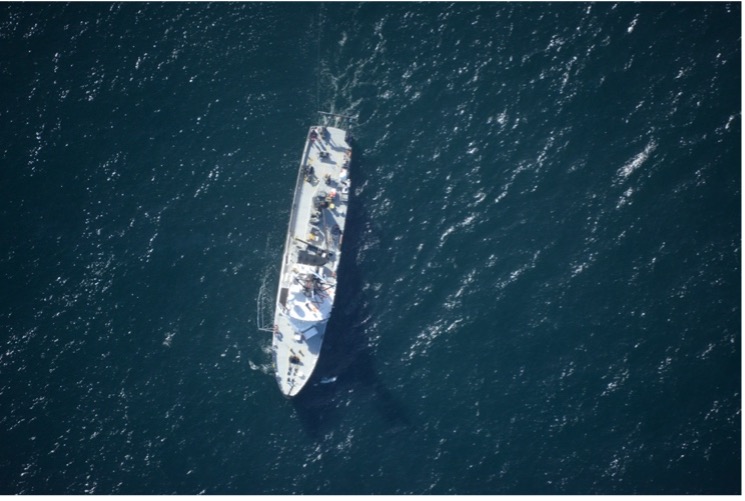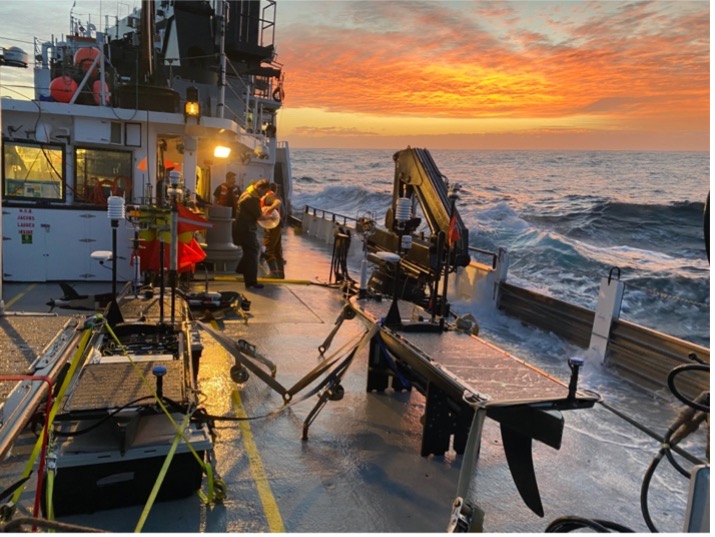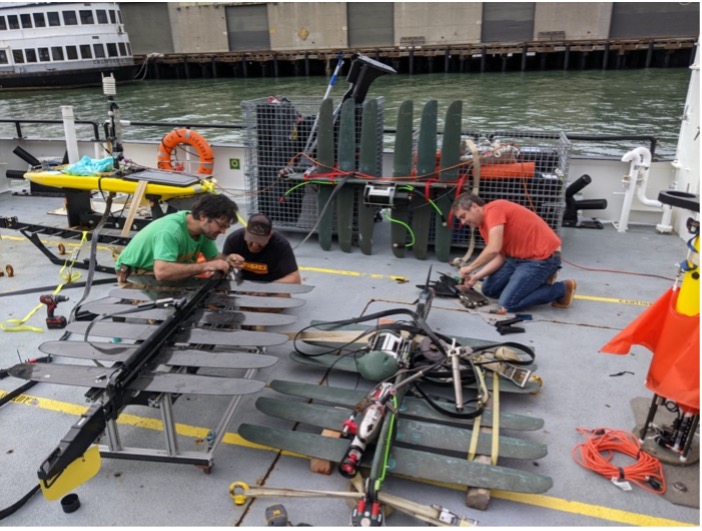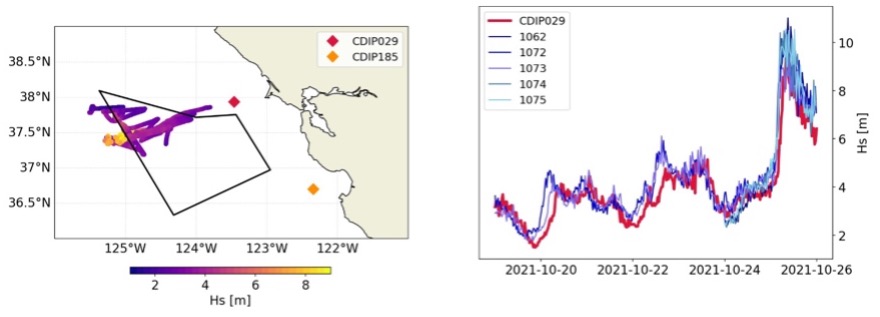By Nick Pizzo // OFF THE COAST OF CALIFORNIA //
The October deployment of NASA’s Sub-Mesoscale Ocean Dynamics Experiment (S-MODE) mission is underway and a current of excitement has filled the halls of our virtual meetings. Over the past two years, more than 50 members of the S-MODE project have been meeting virtually to prepare for this moment. Our campaign has begun and we are testing our instruments, optimizing our sampling patterns and comparing our measurements between various instruments over a nearly three-week pilot experiment. The mission for S-MODE is ambitious: we seek to better measure, understand and ultimately model submesoscale currents, which are ocean fronts, narrow currents called jets, and filaments that are about 300 feet (100 meters) to 6.2 miles (10 kilometers). These are elusive targets for oceanographers as they are difficult to measure: too big for a ship-based study alone, too quick for ship surveys, and too small for remote sensing. Therefore, these currents must be examined using a combination of different approaches and novel technologies, as is being done in our experiment.

To researchers with the NASA S-MODE mission, it feels like we are near the edge of something new – that it is a time of rapid change in our understanding of the ocean. Sub-mesoscale currents pull apart and push together water at the ocean surface, and this leads to water flowing up and down, respectively. This up and down motion is important for a number of Earth science processes, including interactions of the air and sea that impact weather and processes that affect the distribution of nutrients that are important for plankton productivity.

I am part of a team that is deploying Wave Gliders, a small uncrewed vessel that has a set of fins on a submersible platform tethered to a surface float, which it uses to kick its way around the upper ocean. These platforms are decked out with instruments and are not limited by interference from the ship. They also do not have the same risk as putting humans out in the middle of large storms (like ones we have experienced during S-MODE!).
On the transit from Newport, Oregon to the experiment site off the coast of San Francisco, large waves (some reaching around 23 feet or 7 meters tall) rolled over the deck of the research vessel Oceanus and three of the four Wave Gliders were damaged in the process. Researchers in the Air-Sea Interaction Laboratory at Scripps Institution of Oceanography and a team at Woods Hole Oceanographic Institution began to problem solve issues with the Wave Gliders by inspecting extra platforms that were on land here in San Diego, California and diagnosing the issues based on pictures provided by the team on the R/V Oceanus. Scientists from across the country then assembled to repair the Wave gliders in San Francisco harbor.

With the Wave Gliders repaired and deployed, we could again pursue our mission objectives. There was still considerable swell in the water from a historically large storm that had just passed through the region (which was accompanied by the well-publicized atmospheric river that brought so much rain and snow to northern California). In fact, the Saildrones in our campaign measured large significant wave heights during this storm! After the major storms passed, the Wave Gliders were deployed, and they are currently operating in unison with the other instruments in the campaign. The data has started to roll in!
I and several others in the campaign am interested in how surface waves interact with sub-mesoscale current features. For example, as waves turn as they approach the beach to be parallel to shore, sub-mesoscale currents steer the waves, sometimes leading to wave breaking in localized regions. These breaking waves are important for upper ocean dynamics and air-sea interactions: they generate spray and bubbles that are important for gas transfer between the atmosphere and ocean. Historically, wave data has been viewed as measurement noise. But, with the emerging technologies being employed in S-MODE, scientists are excited about the possibility that wave information can tell us about the underlying currents.

For many of us, this experiment has been invigorating, bringing us back in touch with the excitement and discovery that comes with oceanographic field campaigns. There have been many excited conversations around a monitor, examining the data as it comes into our stations on shore. As an early career scientist, I feel as if I am taking part in a historical campaign. This is truly an exciting time to be an oceanographer.

